ICE 419B multiband filters
written September 1, 2008
The pictures which follow were made using an HP-141T-HP8552B-HP8553B spectrum analyzer with an HP8444A tracking generator. The scans were performed on June 24, 2008 on an ICE 419B band pass filter provided by Rich, AA2MF. The unit was run into a 50 ohm resistive load. There may be changes in insertion loss and rejection if the load is significantly different from 50 ohms resistive.
There are three pictures for each band. The first picture of a set of three shows the pass band rejection over a wide frequency range -- generally covering the sub-harmonic frequency, the fundamental frequency and the second harmonic frequency of the filter pass band. The amplitude display scale for this scan is 10 dB per division. The second picture in each set shows the pass band insertion loss. The amplitude display scale for that scan is 2 dB per division. The third picture shows the return loss of the filter when terminated in a 50 ohm load and the amplitude display scale is 2 dB per division..
I was unable to find published specifications for the ICE 419B in form similar to the ones provided by Dunestar for its Dunestar 600.
Based upon the measurements I made I constructed a set of specifications. The specifications should NOT be viewed as officially provided by I.C.E.
Insertion Loss: Typical, 0.5-0.9 dB
Rejection:
|
Band |
Band down |
Band up |
|
160m |
NA |
23 dB |
|
80m |
30 dB |
23 dB |
|
40m |
50 dB |
30 dB * |
|
20m |
40 dB |
30 dB |
|
15m |
45 dB |
34 dB |
|
10m |
55 dB |
NA |
Bandwidth: VSWR <1.5:1
160M 1.8- 2.0
80M 3.5- 4.0
40M 7.0- 7.30
20M 14.0-14.35
15M 21.0-21.50
10M 28.0-28.70
I am guessing that each of the ICE 419B filters is manually tuned during production.The measurements I recorded are specific to this unit and may not apply to other units. I have been unable to reach the factory to discuss the ICE 419B but I would expect that the differences between units are small.
Results of my measurements on this unit:
1. My measurements show for these filters in every case the band rejection attenuates the sub-harmonic by at least 30 dB and the second harmonic by at least 23 dB. (See table above)
2. On every band I found the insertion loss to be slightly greater than the insertion loss of the comparable Dunestar 600 filter – perhaps by 0.2 to 0.4 dB. My spectrum analyzer probably is not really able to accurately measure to the nearest 0.1 dB so these results should be viewed as showing that the insertion losses of the Dunestar 600 filters are slightly less, band to band, than the I.C.E. ones with the exception of 80m and 160m. Because of the reduced bandwidth of the Dunestar filters on those bands, the losses on the high end of 160 meters and 80 meters will be more on the Dunestar 600 filters. This may affect operation in some SSB contests or general operation using frequencies above 1.9 MHz and 3.9 MHz.
3. I was not able to find a published bandwidth specification for the ICE 419B filters. However, the measurements show that each band filter has a VSWR of 1.5:1 or better for the entire band. I would not expect that there will be filter failures at power inputs of up to 200 watts as long as the load presented to the filters is 50 ohms resistive.
Observations:
The ICE filters appear to be capacitor coupled tuned circuits. [See figure #1] I saw no step up from 50 ohms so the tuned circuits appear to be loaded with the input and output impedance. That probably affects the Q of the circuit.. The choice of mica capacitors suggests that the filters will be robust even when loads are not exactly 50 ohms resistive. The construction is ‘open’ as is seen in the photo and there may be some coupling between filter sections. The inter filter shielding is much less than is found in the Dunestar units and the feed to each filter is via a copper strip from relay to relay rather than individual coax lines to each relay as is done in the Dunestar 600.
In the attenuation curves of the ICE 419B do not achieve the same level of attenuation for the sub harmonic and the second harmonic as the Dunestar 600 does. But the cost of the Dunestar 600 filters is slightly greater. Many contest operators are successfully using the ICE 419 filters so their performance is probably satisfactory for SO2R and MultiOp stations -- at least in some situations. As the saying goes, "Your mileage may vary".
Figure #1
Internal view of ICE 419B
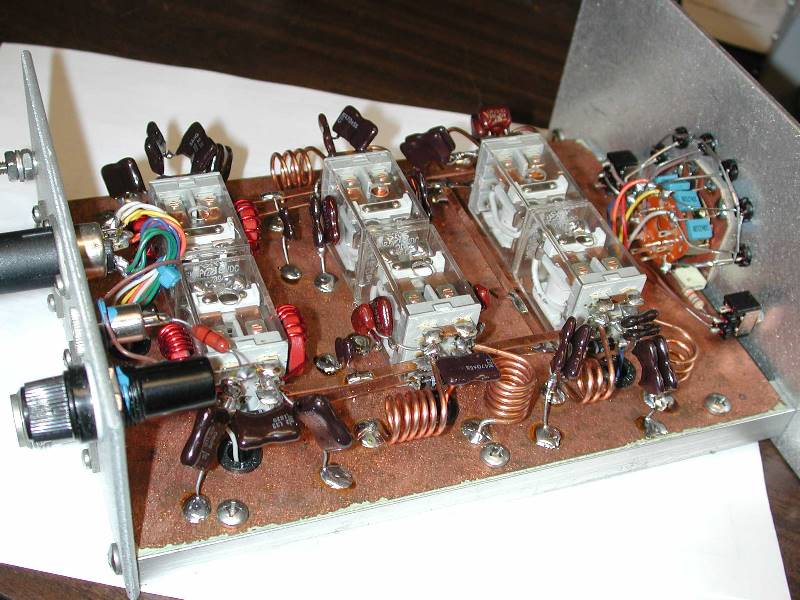
The 160 meter filter.
Attenuation
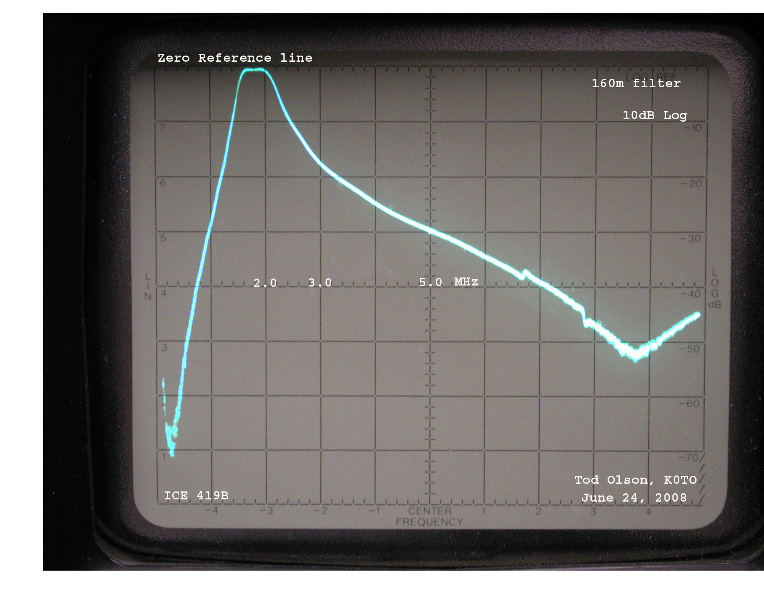
Pass Band Loss
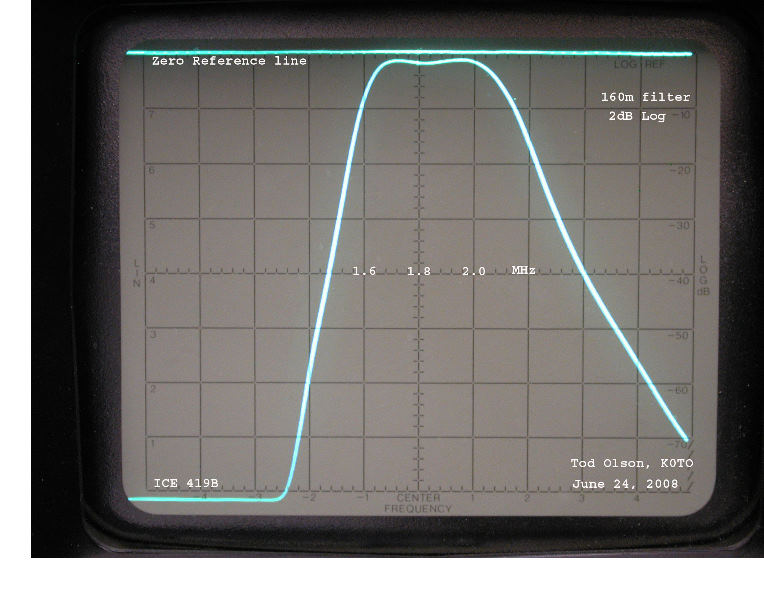
VSWR
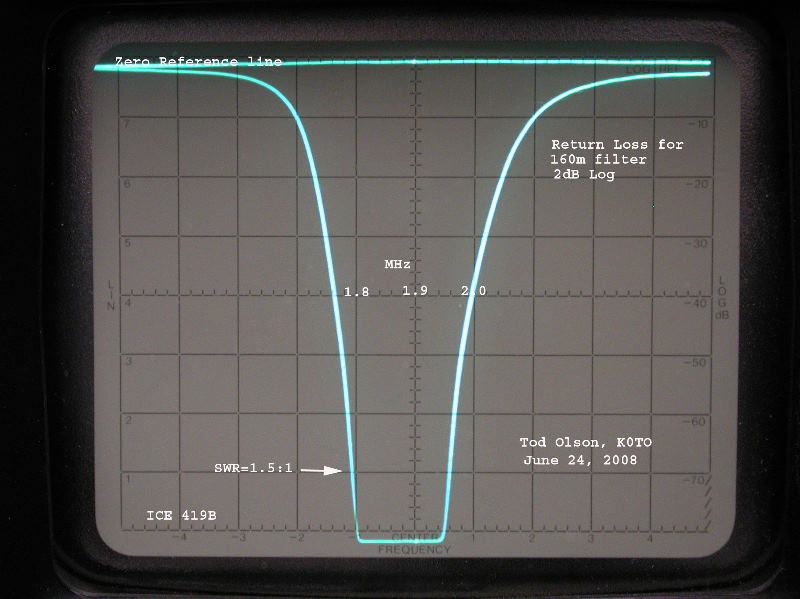
The 80 meter filter.
Attenuation
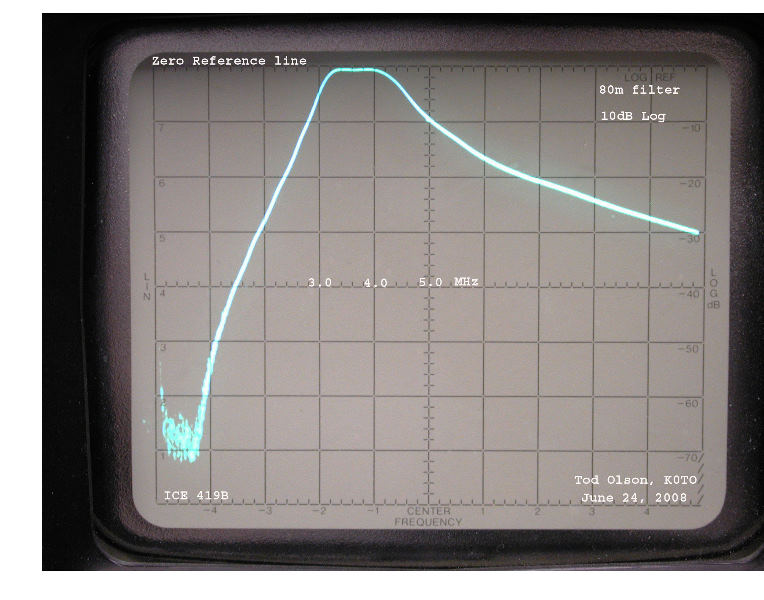
Pass Band Loss
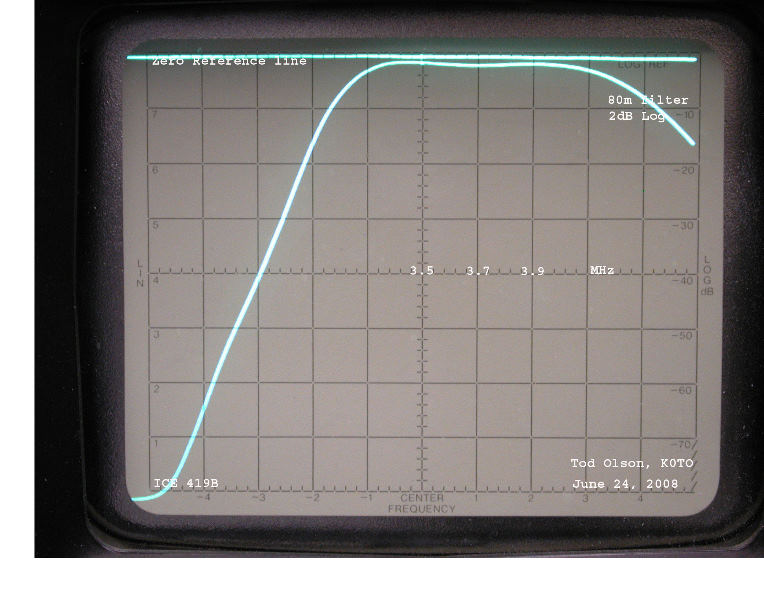
VSWR
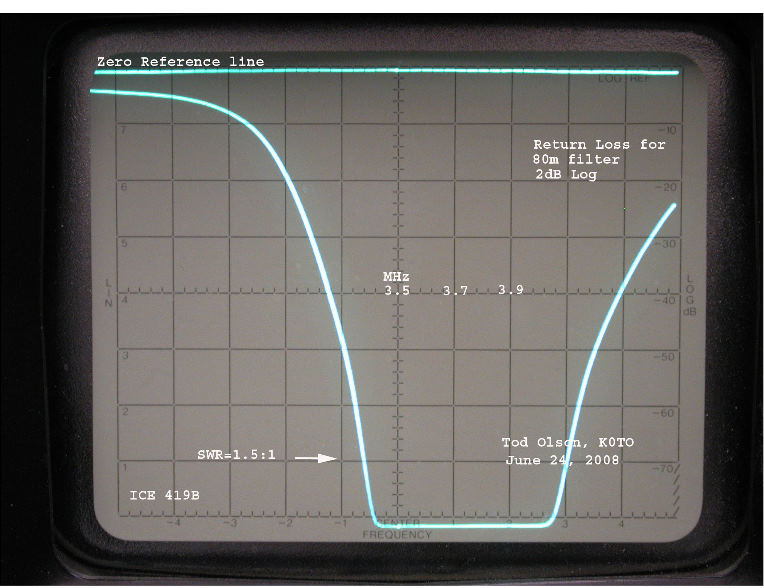
The 40 meter filter.
Attenuation
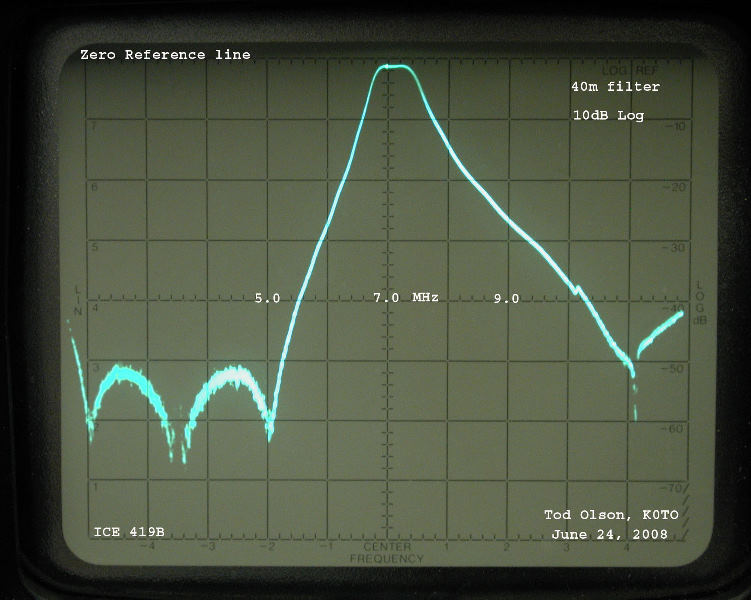
Pass Band Loss
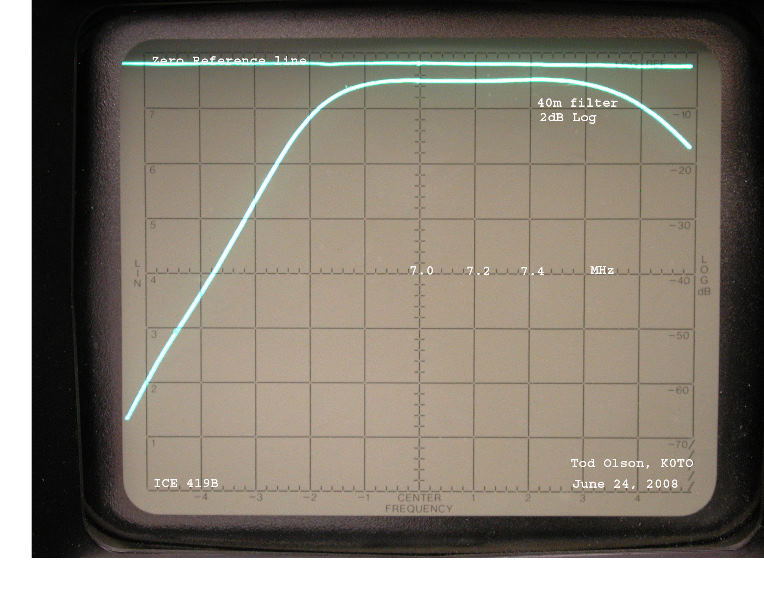
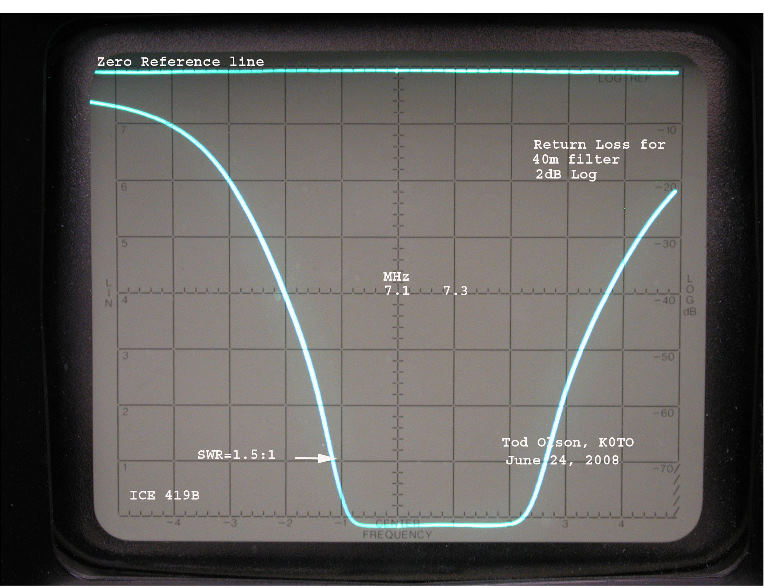
The 20 meter filter.
Attenuation
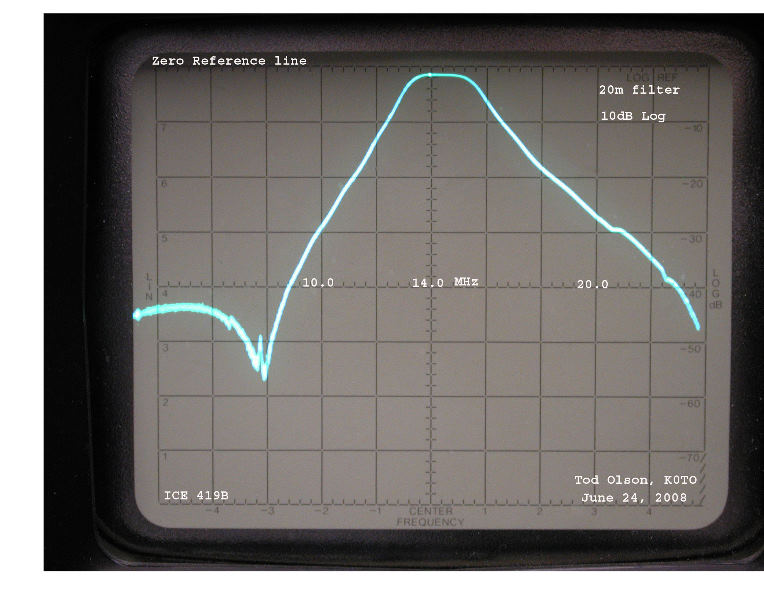
Pass Band Loss
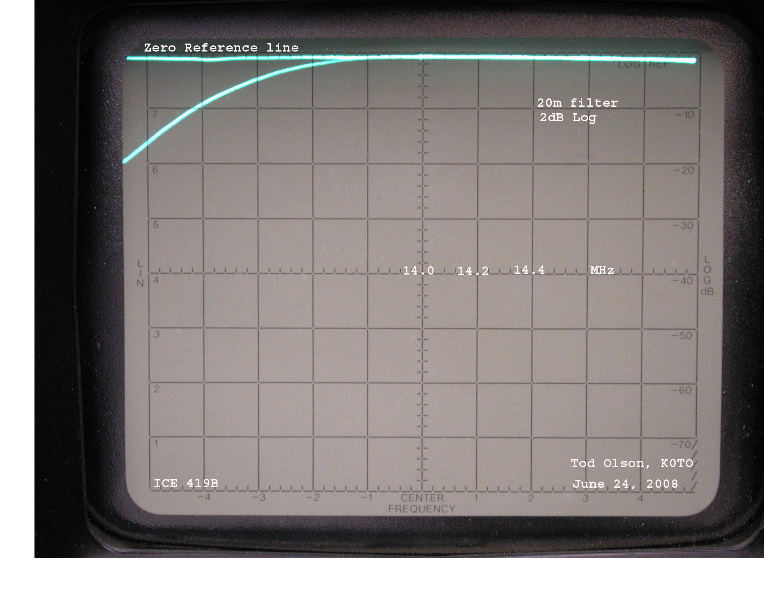
VSWR
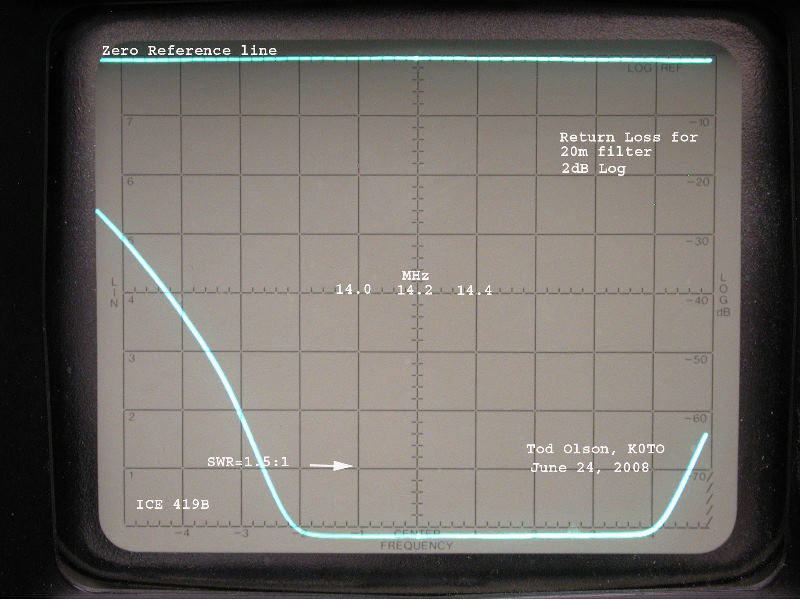
The 15 meter filter.
Attenuation
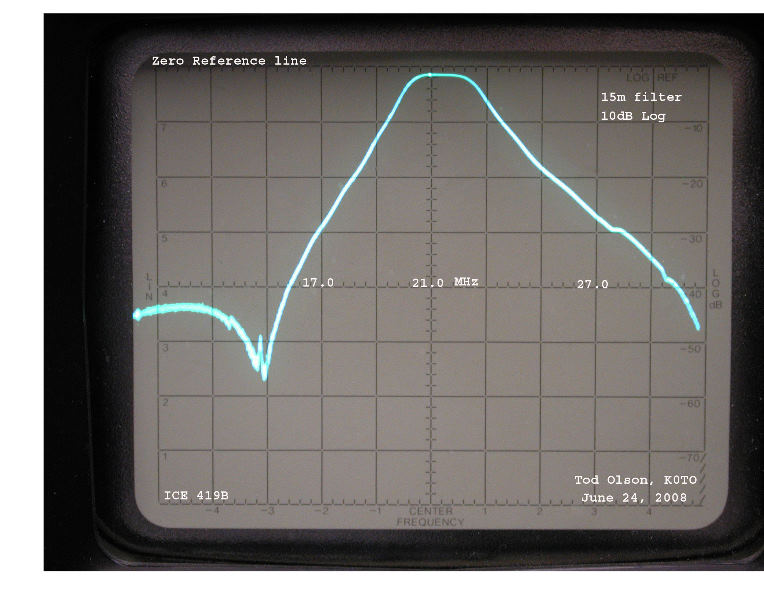
Pass Band Loss
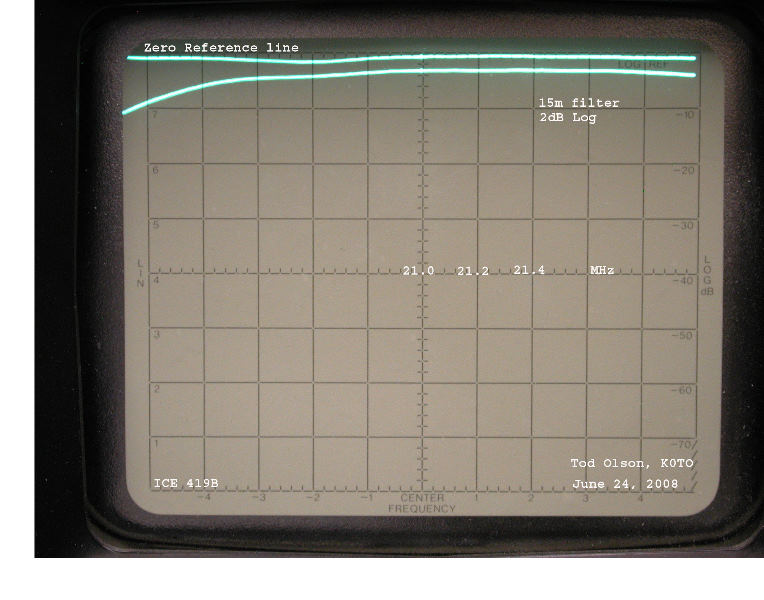
VSWR
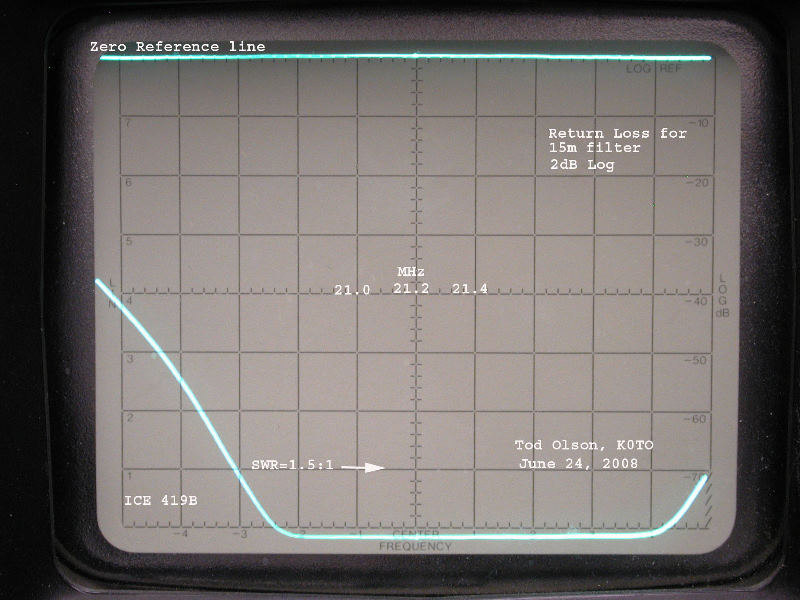
The 10 meter filter.
Attenuation
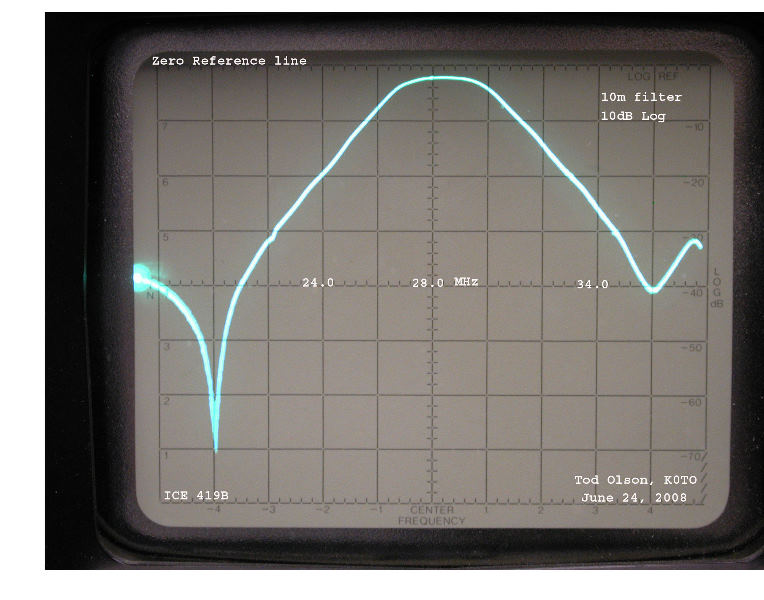
Pass Band Loss
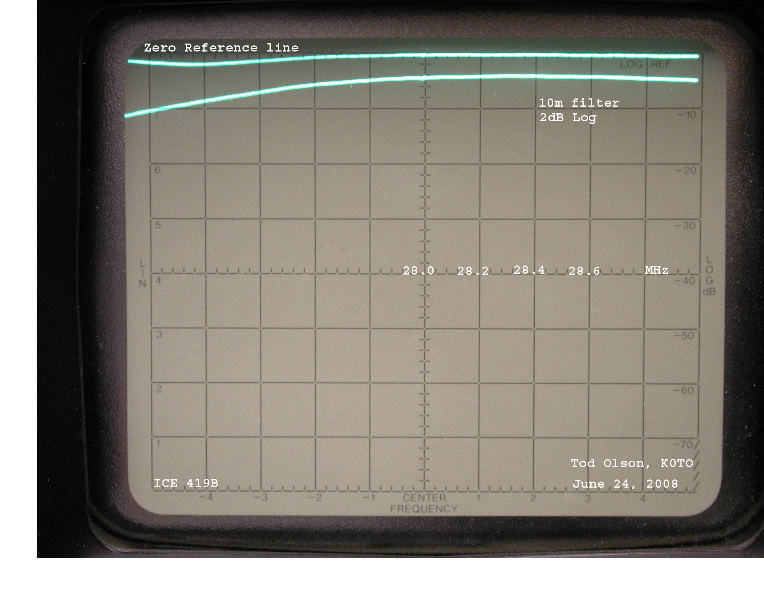
VSWR
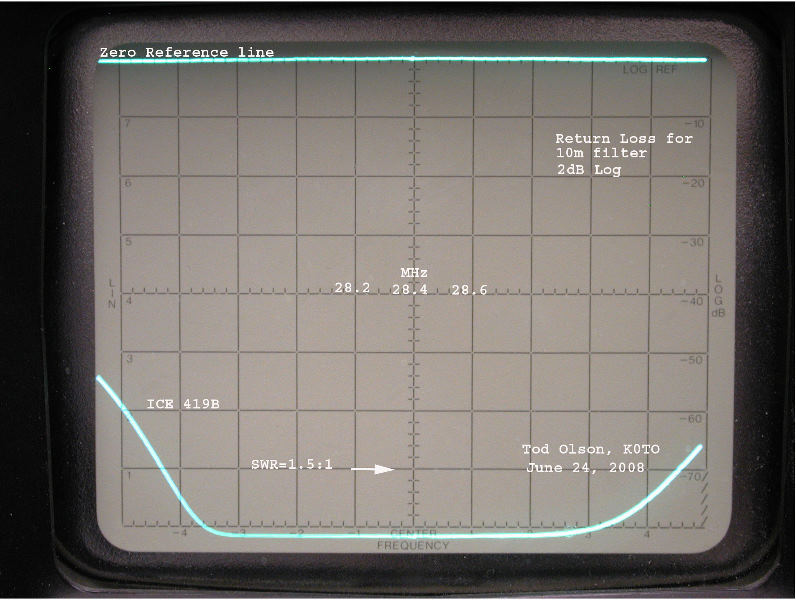
End